Inside: Are you wondering what Structured Literacy and the Science of Reading can do for your students? Explore evidence-based approaches to boost literacy skills.
This post contains affiliate links. As an Amazon Associate, I earn from qualifying purchases at no extra cost to you.
It seems like what is considered to be “best practice” in literacy instruction is always changing. When I first started teaching, balanced literacy was the name of the game. Guided reading was everything.
But oh, how things have changed.
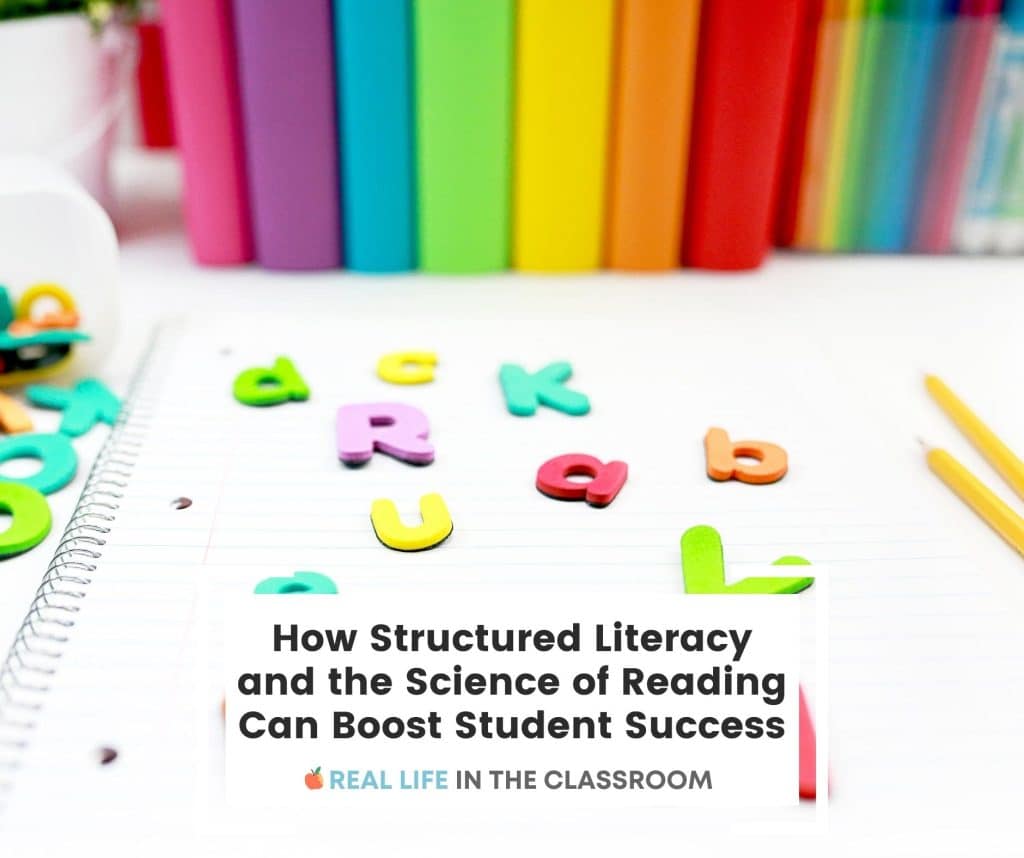
Table of Contents
What is the Science of Reading, Actually?
Unless you’ve been living under a rock, I’m sure you heard the phrase The Science of Reading. It’s been thrown around left and right in the world of education. But you may be wondering what it all means.
The Science of Reading is not a specific reading program or approach. It is a body of research exploring how we learn to read. It includes looking at cognitive processes, instructional practices, and educational policies to understand the best ways to teach reading skills.
Notably, it’s helping educators understand that learning to read is not an innate ability. That is, it’s a skill that must be explicitly taught.
The Science of Reading highlights the importance of the essential components of reading, such as phonological awareness, phonics, fluency, vocabulary, and comprehension.
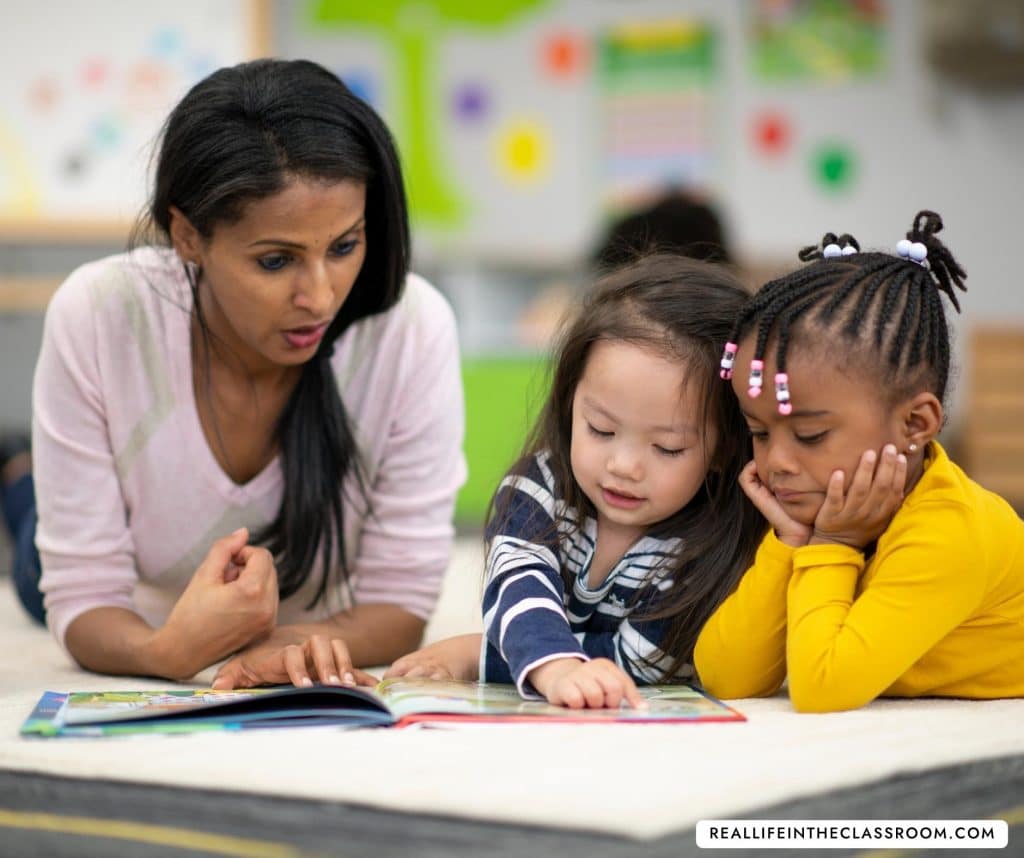
Key Aspects of Reading Instruction Aligned to the Science of Reading:
- Phonological Awareness: An understanding of the sound structure of a language, like recognizing that the word “bat” is made up of three distinct sounds: /b/, /a/, /t/
- Phonics: Understanding how letters or letter groups represent sounds, helping to decode words
- Fluency: The ability to read accurately, quickly, and with expression, making the reading sound natural
- Vocabulary: Knowing the meaning of words and how to use them correctly
- Comprehension: The ability to understand and interpret what’s being read
- Oral Language Skills: Developing speaking and listening abilities, essential for reading development
- Explicit and Systematic Instruction: Teaching skills in a clear, direct, and orderly manner
Breaking Down Structured Literacy
Let’s take it a step further. While The Science of Reading encompasses a body of research related to the way people learn to read, Structured Literacy is an approach to reading instruction that builds upon the principles of the Science of Reading.
It takes the insights gained from scientific research on how children learn to read and applies them in a systematic, sequential manner.

While you may be familiar with other approaches to literacy instruction, Structured Literacy represents a more scientific and evidence-based methodology.
Key Components of Structured Literacy Reading Instruction:
- Explicit Phonics Instruction: Teaching the relationship between letters and sounds in a clear and direct way
- Systematic Progression: Lessons are organized in a logical sequence, building from simple to complex skills
- Phonological Awareness: Emphasizing the sound structure of language
- Rich Vocabulary Development: Ensuring students understand the meanings of words and can use them in context
- Reading Comprehension Strategies: Teaching strategies to interpret and understand the text
- Fluency Development: Encouraging accurate and effortless reading
- Writing and Spelling Instruction: Connecting reading with writing and spelling skills
- Continuous Assessment: Regularly evaluating student progress and adapting instruction as needed. Tools like Science of Reading Literacy Centers for Phonics (SOR Word Work) can aid in these assessments, providing interactive ways to gauge progress.
If you want to create a classroom environment where your reading instruction is aligned with The Science of Reading, consider embracing the elements of Structured Literacy. Both are rooted in a deep understanding of the complex process of learning to read, and they share a commitment to instruction that is grounded in evidence, clarity, and purpose.
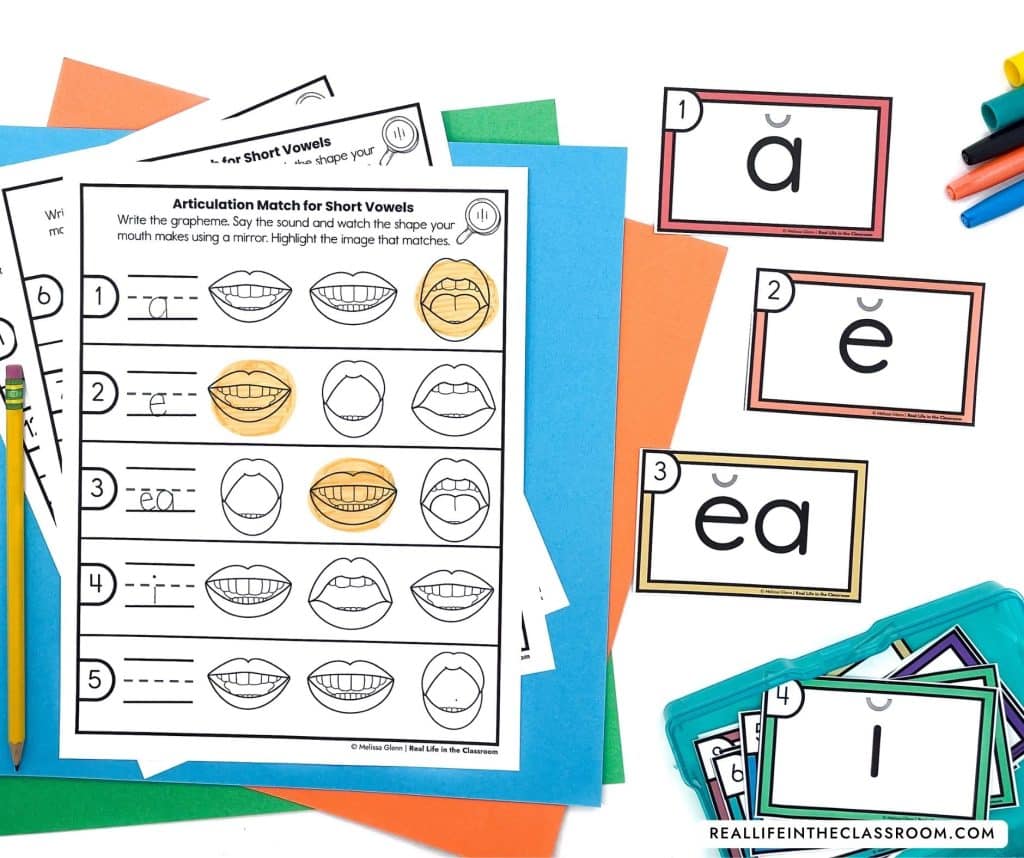
If you’re looking to implement Structured Literacy in your classroom, check out these Science of Reading Literacy Centers for Phonics (SOR Word Work). They offer hands-on activities that align with the principles of the Science of Reading. 🙌
Old School vs. New School: Comparing Structured Literacy and Balanced Literacy Approaches
If you’ve been teaching with a balanced literacy approach for a while, a shift to something different can seem overwhelming. For so long we were told that meeting with students in guided reading groups and using leveled readers was the best way to teach reading.
Let’s take a moment to look at Balanced Literacy and Structured Literacy to highlight what’s the same and different.

Balanced Literacy = Old News
This method, once seen as best practice, focuses on a balance between whole language and phonics instruction. Sounds like a good thing, right? I thought so, too. But while it emphasizes student choice and exposure to authentic texts it often lacks the systematic and explicit instruction found in Structured Literacy. Don’t get me wrong… It’s not all bad. It has elements that cater to various learning styles. But we can’t ignore that it may leave gaps in foundational skills.
The biggest issue? Many aspects of balanced literacy are not research-based.
Structured Literacy is Where It’s AT
On the other hand, Structured Literacy is aligned with the Science of Reading, emphasizing explicit, systematic, and evidence-based instruction. It builds on research-backed principles and follows a logical sequence to ensure no gaps in learning. Structured Literacy provides clear guidelines and specific strategies for teaching all aspects of reading. Tools like these Science of Reading Literacy Centers for Phonics (SOR Word Work) can make the transition from balanced literacy to Structured Literacy a little smoother for you and your students.

The Common Ground
Both of these approaches stress the importance of engaging students with texts and fostering a love for reading. If you want to transition from balanced literacy to Structured Literacy you don’t need to abandon everything! Keep your engaging texts and creative elements but focus on incorporating more explicit instruction in phonics and other foundational skills.
The Differences
The biggest difference between Structured Literacy and Balanced Literacy? It’s the emphasis on systematic and explicit instruction in all reading components. Structured Literacy addresses the need for a more organized and research-backed progression, something often missing in balanced literacy.
This shift in instruction requires us to evaluate the way we teach and make any needed changes to align with evidence-based methods.
Your Guide to Implementing Structured Literacy and the Science of Reading in Your Classroom
Now that I’ve given you a basic understanding of the different approaches and research- let’s get to the good stuff. How you can apply these ideas in your real classroom with real students.
1. Emphasize Phonological Awareness
Phonological awareness is the understanding of different ways that oral language can be divided into smaller components and manipulated. Emphasize this in your classroom by incorporating activities such as rhyming games, syllable clapping, and sound segmentation. Start with larger sound units like words and syllables and then move on to onset-rhyme and individual phonemes.

2. Teach Phonics Systematically
Phonics instruction must be systematic. Follow a logical order that helps students understand the relationship between letters and sounds. You might start with single consonants and short vowels, move to consonant blends and digraphs, and then to long vowels and vowel teams. Use tools like phonics charts or blending boards, combined with consistent practice to make sure that your students are grasping these essential concepts.
If you’re looking for specific resources to emphasize phonological awareness and phonics, these Short A CVC Science of Reading Literacy Centers & Phonics Games are perfect. They provide engaging and systematic practice and can be used in centers or as independent practice activities. Right now I only have a set for short a available, but more are coming soon!
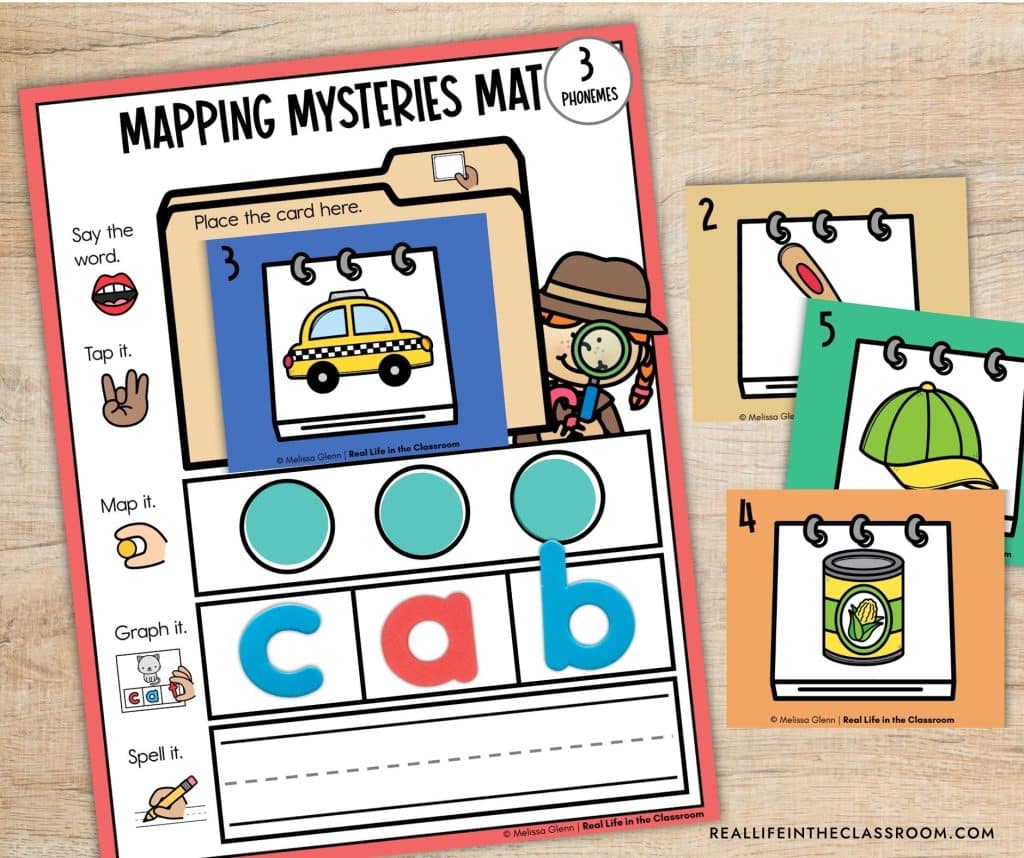
3. Incorporate Vocabulary Development
Structured Literacy is all about building strong word skills. You’ll want to give your students a solid vocabulary foundation by explicitly teaching word meanings, contextual usage, and word relationships. Use a thematic word wall, semantic mapping, and fun vocabulary games to help students learn new words. Encourage them to use new words in writing and conversation to reinforce learning.
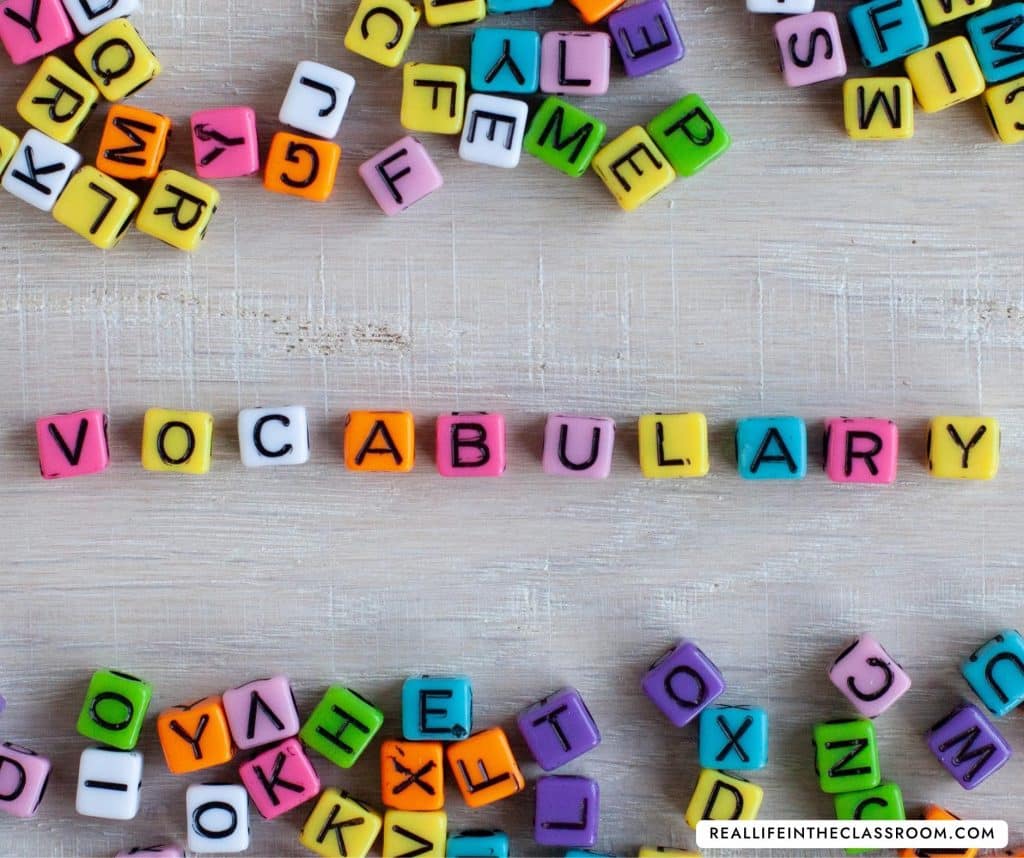
4. Integrate Fluent Reading Practices
Reading fluently is more than just reading at a good pace. It’s about reading with accuracy, expression, and comprehension. You can support fluency by giving your kids opportunities to repeatedly read texts at the appropriate level. Activities like partner reading, reader’s theater (one of my personal favorites), and timed repeated readings are just a few things you can do to boost fluency.

5. Implement Multisensory Strategies
Multisensory techniques engage more than one sense at a time, enhancing memory and learning. Use tactile methods like tracing letters in sand or building words with manipulatives. You can combine visual aids, auditory drills, and movement in different ways to address different learning styles while reinforcing concepts.
You can do these activities in small group settings or you may choose to do them in literacy centers. To learn more about literacy centers aligned to The Science of Reading, check out my blog posts, Building Strong Foundations: The Power of Successful Science of Reading Literacy Centers and Empowerment Through Structure: Why Consistent Literacy Centers Work.

You can grab a free copy of my Short A Word Building Cut & Paste Center Activity by clicking here.
6. Focus on Comprehension Strategies
Model effective comprehension strategies such as making predictions, asking questions, and questioning.
Start with a shared reading experience or read-aloud where you demonstrate these strategies in action. You might pause during a story to make a prediction or ask a thoughtful question, showing students how to actively engage with the text.
Provide support through guided practice, working closely with students as they begin to apply these strategies themselves. Then, gradually release responsibility to the students, allowing them more opportunities to make predictions and ask questions on their own. Encourage them to use these strategies across different texts and contexts.

You can use tools like graphic organizers to help students visually structure their thoughts and think-aloud strategies to articulate their reasoning.
With consistent practice and scaffolding, students can learn to apply these skills independently, fostering a deeper understanding and enjoyment of reading. By integrating these techniques into daily reading activities, you’ll be nurturing confident and thoughtful readers who can explore and appreciate a wide variety of literature.
7. Use Assessment and Differentiation
Regular assessment helps to identify students’ strengths and areas for growth, allowing you to plan for meaningful, targeted instruction. Using a mix of formative and summative assessments, you can tailor instruction to individual needs.

Keep in mind that differentiation doesn’t mean different lessons for every student. Adjust content, process, or product as appropriate for students’ readiness levels, interests, or learning profiles.
Content differentiation might mean providing reading materials at varying complexity levels or offering more visual aids for some learners. Process differentiation could involve changing the ways students are grouped or the strategies they use to explore a concept. And product differentiation might mean allowing students to demonstrate their understanding through various mediums, such as writing, speaking, or creating a visual representation.
Be thoughtful and responsive to individual differences- you’ll be creating an inclusive learning environment where all students have the opportunity to find success! By making some targeted adjustments you’ll be making a significant difference in students’ engagement and achievement.
Looking Forward: The Future of Reading Instruction
As research continues to deepen our understanding of how students learn to read, more and more teachers are adopting tools that align with the Science of Reading, such as my Science of Reading Sound Wall, which organizes phonemes in a way that reflects how sounds are produced, enhancing reading instruction. To read more about how this sound wall changed the game in my classroom, check out this blog post: Ditch Your Word Wall for Good and Say Hello to Sound Walls.
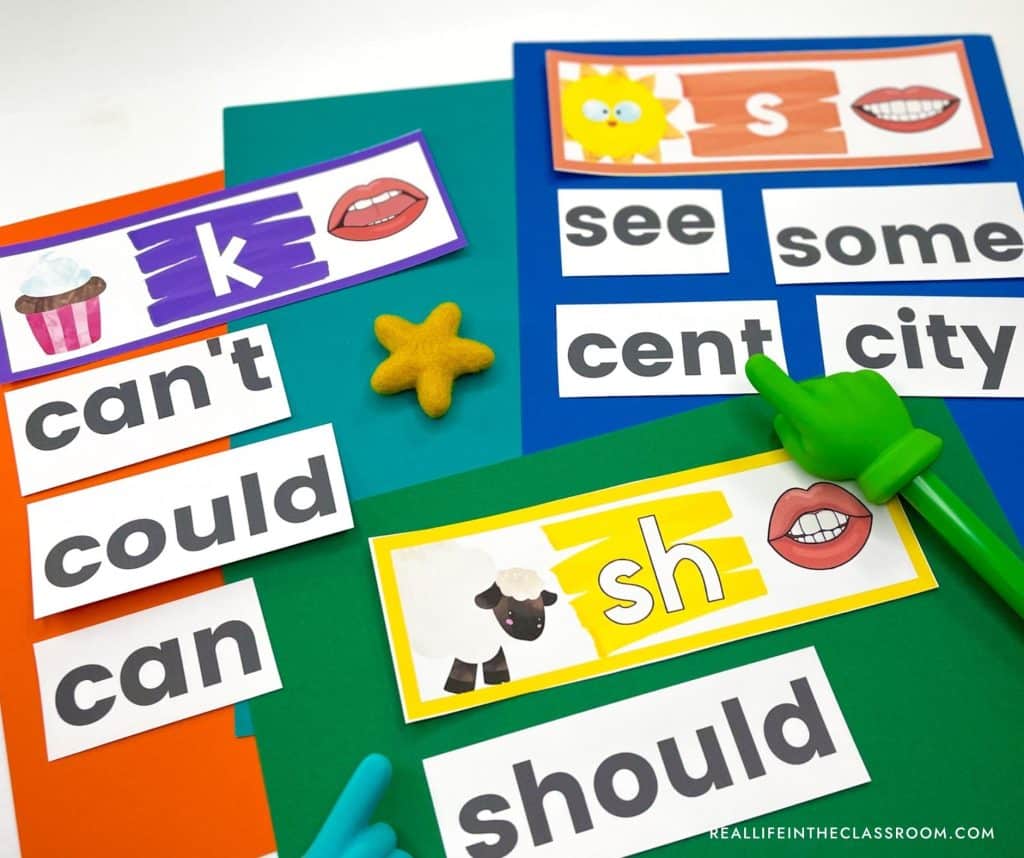
It’s time to commit to using approaches rooted in actual research and take steps toward more effective and equitable reading instruction. Embracing Structured Literacy and the Science of Reading will help you share the joy and success of reading with your students. These tools, resources, and educational approaches are not just a trend. This is a major shift in teaching reading that is making a huge difference.
If you’re eager to learn more about how children learn to read and research-based strategies, check out these books:
- Proust and the Squid: The Story and Science of the Reading Brain by Maryanne Wolf – This book explores the neurological basis of reading and offers insights into how the brain learns to read.
- Essentials of Assessing, Preventing, and Overcoming Reading Difficulties by David Kilpatrick – A comprehensive guide that presents assessment tools and strategies to overcome reading difficulties.
- Speech to Print: Language Essentials for Teachers by Louisa Moats – Targeted at teachers, this book offers the foundational knowledge about language necessary for effective instruction in reading.
- Unlocking Literacy: Effective Decoding and Spelling Instruction by Marcia K. Henry – Focuses on word study, including phonics, phonemic awareness, and vocabulary, as essential components of reading instruction.
- Reading in the Brain: The New Science of How We Read by Stanislas Dehaene – A fascinating exploration of cognitive neuroscience and psychology as it pertains to reading.
- Language at the Speed of Sight: How We Read, Why So Many Can’t, and What Can Be Done About It by Mark Seidenberg – A look at the science behind reading, examining why many struggle with this essential skill.
- Shifting the Balance: 6 Ways to Bring the Science of Reading into the Balanced Literacy Classroom by Jan Burkins and Kari Yates – A guide for teachers looking to shift from balanced literacy to a more structured approach aligned with the Science of Reading.
- Equipped for Reading Success by David A. Kilpatrick – A practical guide that provides explicit instruction and intervention strategies, aligning with Structured Literacy principles.
These books include a range of perspectives, research, and practical strategies, making them great resources if you’re seeking to understand and apply the principles of Structured Literacy and the Science of Reading in your classroom.

Also, as you continue to enhance your reading instruction, tools like my Science of Reading Sound Wall with Mouth Pictures & Word Wall Hybrid can make the transition to Structured Literacy smoother.
The shift towards Structured Literacy and the Science of Reading is not just another trend in education but a movement towards evidence-based reading instruction. (Finally!) This approach empowers us as teachers to transform our teaching methods, offering every student a solid foundation in reading.
It’s up to us to stay informed and apply these strategies. If you’re ready to take the next step in aligning your classroom with the Science of Reading, check out the resources available in my TPT store. Here, you’ll find tools like the Science of Reading Sound Wall and more, all designed to align with the principles of the Science of Reading.
Let’s embrace this wave of change together and provide our students with the reading skills they need to become great readers!
Frequently Asked Questions
Who Benefits from Structured Literacy?
While Structured Literacy is especially beneficial for students with dyslexia or reading difficulties, all students can benefit from this approach.
Is Structured Literacy Only for Young Learners?
No, Structured Literacy can be effective for learners of all ages who are struggling with reading.
Do I Need Special Training to Implement Structured Literacy?
Resources can range from specialized textbooks to digital apps focused on phonemic awareness, phonics, and other key literacy skills.
How Does the Science of Reading Support Structured Literacy?
The Science of Reading provides the research basis that informs the best practices used in Structured Literacy.







